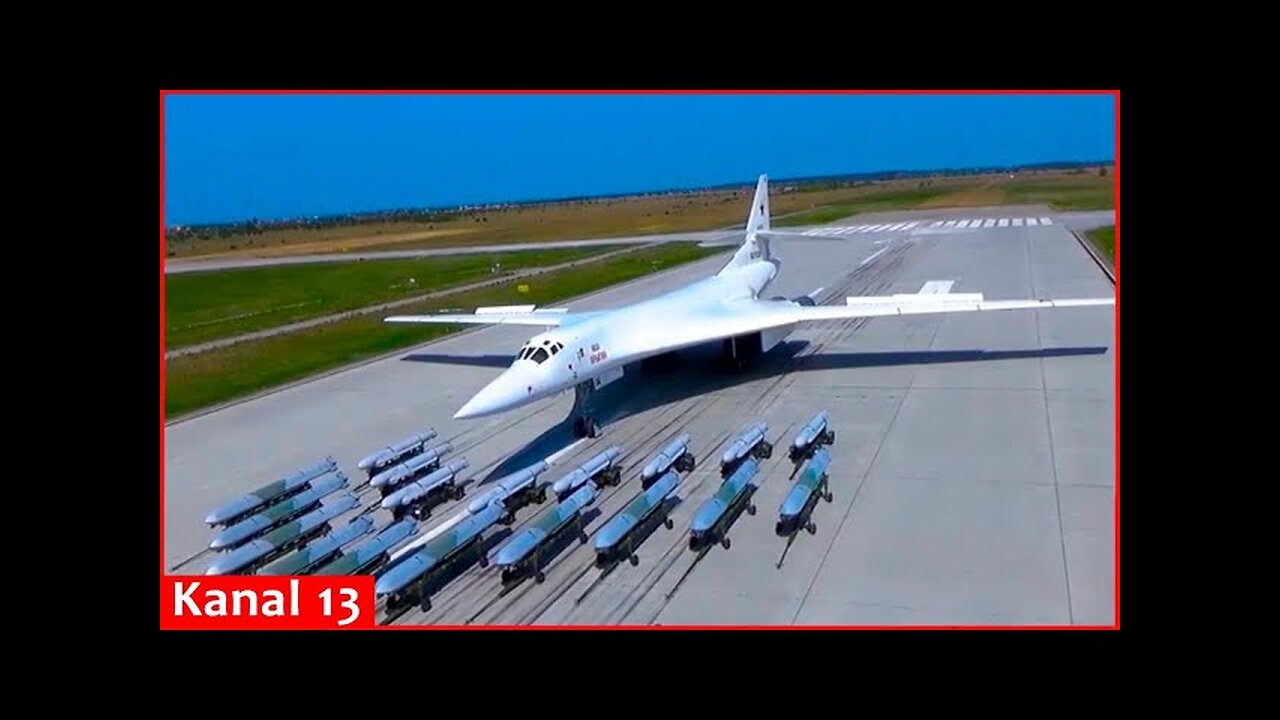Premium Only Content

Russia started production of Kh-101 with two warheads, making the missile twice as dangerous
Ukrainian air defense shot down a modified Russian Kh-101 cruise missile, which had a tandem warhead. The modified version received an additional warhead, doubling its total equivalent from 450 kilograms to about 800 kilograms. The second warhead includes cubic-shaped steel fragments to increase combat efficiency.
It is likely that the additional space for the extra warhead was created by reducing the volume of the fuel tank.
This is likely to affect the range of the cruise missile, but given the territory of Ukraine, the decrease in range is not critical.
According to Defence Express, the installation of an additional warhead, in addition to the usual fragmentation-high-explosive one, occurred due to the reduction in the size of the fuel tank. What this means is a reduction in the flight range of the Kh-101, from 5500 km to a hypothetical 2250 km, which doesn't have much significance. In case of launching such missiles from the Saratov region, even targeting objects in the Lviv region, the Kh-101 will still have 500-700 km remaining for additional maneuvers.
As for the mechanism of releasing the warhead of the missile, which is used in the new version of the Kh-101, it is currently unknown.
Kh-101 is a strategic cruise missile developed with radar cross-section reduction technology. A missile with a special nuclear warhead has a Kh-102 index. It has been developed since 1995, and was adopted in 2013. The carrier of the missile is a Tu-95MSM turboprop strategic bomber and Tu-160. The missile uses a combined inertial guidance system with optical-electronic adjustment, with the homing head activated at the final stages of flight.
In the transport position, the engine is a turbojet dual-circuit, the R95TM-300 models are located inside, the wings are folded under the missile, and the tail is also folded.
After starting, the engine extends out of the body, and the tail decomposes.
-
 1:11:53
1:11:53
vivafrei
9 hours agoThe Great Replacement of American Truckers With Unskilled Foreign Labor - Live with Gord Magill
84.2K59 -
 1:05:13
1:05:13
Sarah Westall
2 hours agoEU Falling, United States Barely Hanging on - Strength and Courage Needed to Fight for Free Speech
27.5K1 -
 LIVE
LIVE
LFA TV
11 hours agoLFA TV ALL DAY STREAM - TUESDAY 8/19/25
991 watching -
 2:11:18
2:11:18
The Quartering
4 hours agoToday's Breaking News! Disgusting Grocery Shopping "Haul" Goes Viral, Las Vegas Collapse & More
100K32 -
 LIVE
LIVE
StoneMountain64
5 hours agoBest Extraction shooter is FINALLY on Console (+CoD Reveal Today)
197 watching -
 3:04:51
3:04:51
Due Dissidence
7 hours agoZelensky RETURNS To DC, HUGE Protests In Israel, Gal Gadot Blames Palestine For Flop, MSNBC Rebrands
44.7K19 -
 1:19:29
1:19:29
The HotSeat
3 hours ago🚨 Dems Swear Mail-In Voting Is “Secure”… Trump Says HELL NO 🚨
14.2K10 -
 9:35:19
9:35:19
Reidboyy
9 hours ago $0.86 earnedNEW FREE FPS OUT ON CONSOLE TODAY! (Delta Force = BF6 Jr.)
31.6K -
 29:20
29:20
Stephen Gardner
3 hours ago🔥YES! Trump unleashes Democrats’ worst nightmare!
21.9K10 -
![[Ep 731] Trump Leading the World | Islam NOT Compatible with West | Guest Sam Anthony [your[NEWS](https://1a-1791.com/video/fww1/93/s8/1/c/n/K/a/cnKaz.0kob-small-Ep-731-Trump-Leading-the-Wo.jpg) LIVE
LIVE
The Nunn Report - w/ Dan Nunn
3 hours ago[Ep 731] Trump Leading the World | Islam NOT Compatible with West | Guest Sam Anthony [your[NEWS
82 watching